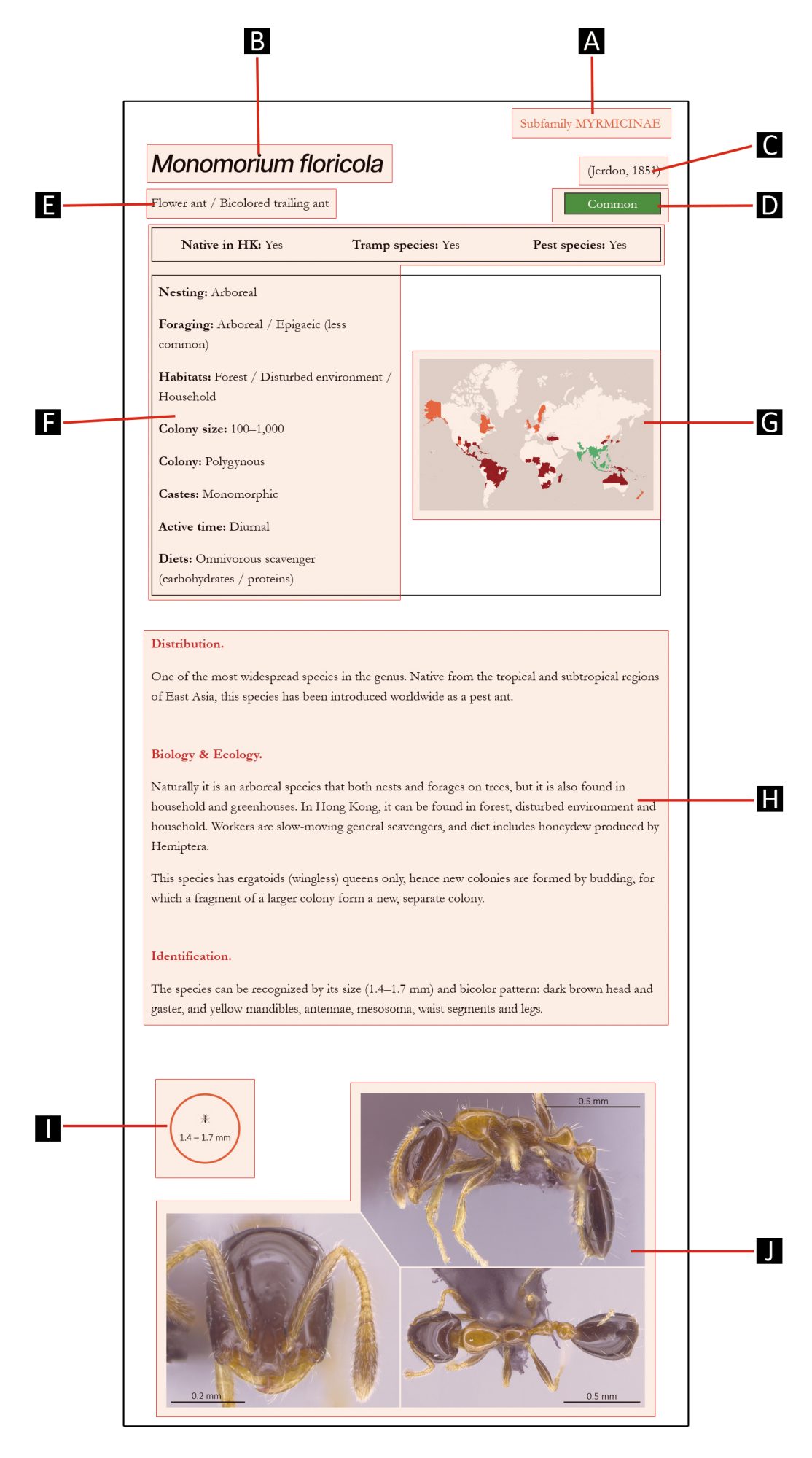
Subfamily FORMICINAE
GENUS
Anoplolepis
Santschi, 1914
Pugnacious ants
Distribution.
A small ant genus with 10 species described. The genus has a limited distribution, mainly restricted to tropical and subtropical regions of the African continent. One species is likely native to Asia (A. gracilipes) but has been introduced worldwide.
Biology & Ecology.
Most of the species are considered epigaeic, which forage above the ground, on lower vegetation and, sometimes, on trees. Nests are large and contain several thousands to over a million workers.
Anoplolepis species are general scavengers, with a strong preference for honeydew produced by Hemiptera. It has been found that honeydew obtained through their mutualistic relationship with Hemiptera constitute an important part of their diet. Removal of the Hemiptera population would drastically reduce the colony size of the ants.
When disturbed, workers are known to be aggressive and have fast zig-zag movements.
Identification.
Anoplolepis species are medium in size (3–5 mm), with yellow to brown coloration. They can be recognized by their narrow petiole and long legs.

Species in this genus




